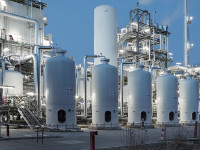April 2018 – @alvaroriosroca – In 2013, with production curves and declining gas fields in Bolivia, we predicted that there would be a deficit of natural gas in 2017 to comply with the contracts that Bolivia had with Argentina and Brazil and also to satisfy its growing local demand and we recommended that massive new investment in exploration was given.
Bolivia maintains a Delivery or Pay contract with Brazil of close to 31 Million Cubic Meters per Day (MMCMD) until 2019 or 2020, with Argentina between 20 to 23 MMCMD until 2026 and its local demand this 2018 to border the 15 MMCMD.
We were very criticized for these analyzes we made in 2013, but the time unfortunately has proved us right The little exploration carried out added to the geological luck in the few drilled exploratory wells, led Bolivia to have a first deficit in the winter of 2016. We must remember the impasse with Argentina that was forced to import more natural gas from Chile (LNG). The same thing happened again in 2017 and the 2018 deficit could be chronic unless some exploratory miracle happens.
On March 28, the Agencia Nacional de Hidrocarburos (Bolivian National Hydrocarbons Agency) (ANH) officially published on its website the production curves of natural gas and condensate from the fields in production, confirming the predictions we made. They show annual production capacity of 54.44 MMCMD (2018), 50.94 MMCMD (2019), 46.56 MMCMD (2020), 42.72 MMCMD (2021), 38.87 MMCMD (2022), 34.08 MMCMD (2023), 29.25 MMCMD (2024) ) and 25.98 MMCMD (2025).
The deficit for complying with export contracts and serving the local market is approximately 12.56 MMCMD (2018) and for 2019 (the year that the contract with Brazil expires) is 16.06 MMCMD. Remember that during 2018 and part of 2019 Bolivia will have to negotiate new natural gas contracts with Petrobras, gas distributors, independent users, thermoelectric users and traders.
Readers can make the respective calculations of how much gas is left for Bolivia to negotiate with Brazil (could be with Argentina for additional volumes as well) for average daily and annual deliveries with the official numbers mentioned above after 2019 and until 2025, discounted the contract with Argentina and its local market that will range between 15 and 16 MMCMD.
Even if the scant exploration that comes in the Boyui prospects on the part of Repsol, in deep Caranda on the part of Petrobras, on Jaguar on the part of Shell or on some prospects that other companies and YPFB have were all successful (we wish it to be) it will be very difficult to counteract these production curves.
The most complicated part of the case is that if the exploration is successful, we will have to wait at least until 2019/2022 to do the tests and sizing the field of the same to know the production capacity and commit to signing firm deliveries and with penalties. Bolivia will inevitably have to face negotiations this 2018 and 2019 with what it has of production capacity now. Moreover, it will have to be evaluated how Enarsa is nominated in Argentina and Petrobras in Brazil until 2019, to whom natural gas is delivered and how penalties will be given until 2019.
Undoubtedly, this is a complicated situation faced by Bolivia when coming close to the completion of its largest export contract started in July 1999, which has given many economic resources and a lot of gas revenue, especially from 2011 to 2014, with production and peak demand and prices at their highest levels.
The production of condensates associated with natural gas also has the same fate and will have an impact on the raw material needed to operate its refineries and there will be additional future imports of gasoline and diesel. It is only necessary to cross your fingers so that the little existing exploration is all successful and we have a little more reserves and production capacity by 2019/2022 to negotiate incremental contracts.
* Current Managing Partner of Gas Energy Latin America





